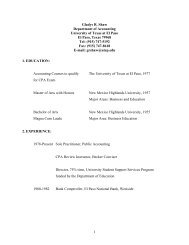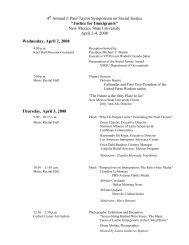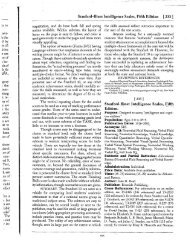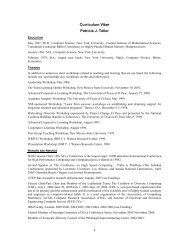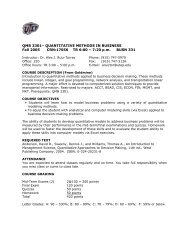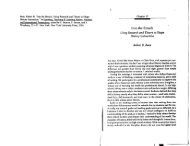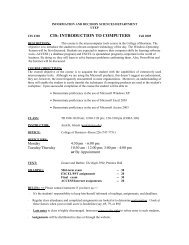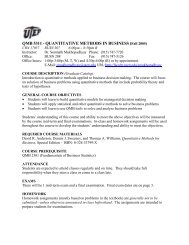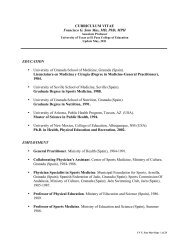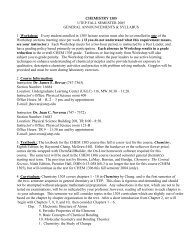Exam - Faculty.utep.edu
Exam - Faculty.utep.edu
Exam - Faculty.utep.edu
You also want an ePaper? Increase the reach of your titles
YUMPU automatically turns print PDFs into web optimized ePapers that Google loves.
151) In this reaction, what is the coefficient for calcium oxide<br />
CaO + CO2 ¬ CaCO3<br />
A) 1 B) 2 C) 3 D) 4 E) 5<br />
152) In this set of chemical reactions, which reaction is an oxidation-r<strong>edu</strong>ction reaction<br />
A) K2SO4 + BaCl2 ¬ BaSO4 + 2KCl<br />
B) CuSO4 + BaCl2 ¬ BaSO4 + CuCl2<br />
C) Zn + H2SO4 ¬ ZnSO4 + H2<br />
D) Pb(NO3)2 + 2NaCl ¬ PbCl2 + 2NaNO3<br />
E) AgNO3 + NaCl ¬ AgCl + NaNO3<br />
153) In this reaction, what is the correct coefficient for sodium chloride<br />
Pb(NO3)2 + NaCl ¬ PbCl2 + NaNO3<br />
A) 1 B) 2 C) 3 D) 4 E) 5<br />
154) In the following reaction, what is the correct coefficient for aluminum chloride<br />
Al + Cl2 ¬ AlCl3<br />
A) 1 B) 2 C) 3 D) 4 E) 5<br />
155) What is the classification for this reaction<br />
SO3 + H2O ¬ H2SO4<br />
A) decomposition<br />
B) combination<br />
C) replacement<br />
D) double replacement<br />
E) oxidation r<strong>edu</strong>ction<br />
156) In a catalyzed chemical reaction, one function of a catalyst is to<br />
A) increase the number of successful reactant collisions.<br />
B) decrease the concentration of reactants.<br />
C) change the equilibrium concentrations of the products and reactants.<br />
D) increase the energy given off during the reaction.<br />
E) increase the temperature at which the reaction is carried out.<br />
21




